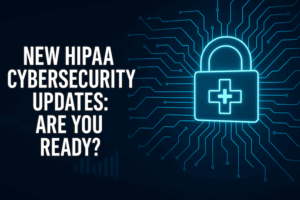The DoD’s XaaS Gamble: Why Identity is the First and Most Critical Service to Get Right
Before delivering “Anything-as-a-Service,” ensure you aren’t exposing Everything-as-a-Risk.
The Future Arrived Fast And Brought Its Own Security Shadow
It started with a success. A new logistics tool was deployed via a Defense agency’s XaaS initiative… faster than anything they’d rolled out before. The celebration didn’t last long.
Why?
Even though the service scaled quickly, identity lagged. This resulted in a manual access review, which revealed that dormant accounts were still active weeks after deprovisioning. Compliance scrambled, and mission risk ballooned.
In a world moving at XaaS speed, identity can’t stay stuck in the slow lane.
XaaS: Agility Without Guardrails?
According to a May 6th report by DefenseScoop, the Department of Defense has launched a bold “Anything-as-a-Service” (XaaS) pilot. The goal is to modernize IT procurement and delivery by shifting from siloed, hardware-bound systems to service-based, modular environments.
The initiative is ambitious, and it makes sense. XaaS offers rapid deployment, greater flexibility, and the potential to reduce technical debt. At the same time, it introduces a fundamentally different operating model that hinges on a single, often overlooked pillar: identity.
Identity.
Device interaction and role-based access must be managed, monitored, and trusted for every service user. Without a modern, scalable identity fabric, the DoD risks trading infrastructure complexity for identity sprawl.
Why Identity Architecture Matters More in a XaaS World
XaaS changes the shape of service delivery and the scale of trust decisions. Instead of a few well-understood systems, there are now dozens (or hundreds) of APIs, microservices, and data flows to govern.
This creates challenges like:
- Delayed Onboarding: Provisioning across systems manually adds days or weeks to user readiness.
- Inconsistent Offboarding: Without automated lifecycle controls, accounts may linger long after access is no longer needed.
- Audit Complexity: Preparing for audits means piecing together logs from different systems, which are usually manual.
- Compliance Risk: Fragmented identity systems increase the chance of missed entitlements or unverified access.
For the XaaS model to succeed at scale, identity has to evolve from a security gatekeeper to a real-time, policy-driven service layer.
Applying Lessons from IAM Modernization
At UberEther, we’ve worked with government agencies navigating these challenges, not only in concept but also in real-world implementation. These experiences have exposed the real-world consequences of DoD’s XaaS Identity Risks, where fragmented access controls and siloed identity systems jeopardize operational efficiency and compliance. To overcome these hurdles, several architectural principles have emerged as essential to identity modernization in the XaaS era:
1. Pluggability Across Environments
Identity services must integrate seamlessly across hybrid, legacy, and cloud-native systems. A one-size-fits-all IAM platform can’t keep pace with modular service delivery.
2. Policy-as-Code
Access rules should be embedded into infrastructure pipelines. This allows changes to be tracked, tested, and deployed like any other critical configuration, reducing manual overhead and increasing resilience.
3. Lifecycle Automation
Automated provisioning and deprovisioning reduce human error, prevent account drift, and ensure access stays aligned with business logic and role changes. In turn, this helps maintain consistency and reduces compliance risk.
4. Compliance as a Byproduct
When certifications, logs, and reports are generated continuously, rather than as last-minute projects, audits become a checkpoint, not a fire drill.
5. Telemetry That Matters
Enriching SIEM/SOAR platforms with identity events creates more context for threat detection and response, making the system secure and observable.
Identity: The First Capability in “Anything-as-a-Service”
The DoD’s XaaS pilot is more than an upgrade; it changes how services are bought and used. However, if the DoD doesn’t address XaaS identity risks head-on, the benefits could be lost to broken trust and day-to-day slowdowns.
Agencies should to evaluate whether their identity architecture can meet the following demands:
- Can identity scale at the pace of modular service deployment?
- Are access controls embedded in CI/CD workflows?
- Is audit evidence generated continuously?
- Can identity data enrich security telemetry in real time?
These aren’t “nice-to-haves.” In a distributed service ecosystem, they are prerequisites for operational integrity and mission assurance.
What This Means for You: Don’t Let Identity Be the Bottleneck
The DefenseScoop article paints a clear picture: the future of government IT is modular, flexible, and fast. That makes the role of identity more, not less, central.
Identity shouldn’t be a blocker. It should be a force multiplier for secure, scalable service delivery.
Discover how UberEther’s IAM Advantage turns identity from a bottleneck into the backbone of secure, scalable innovation.




